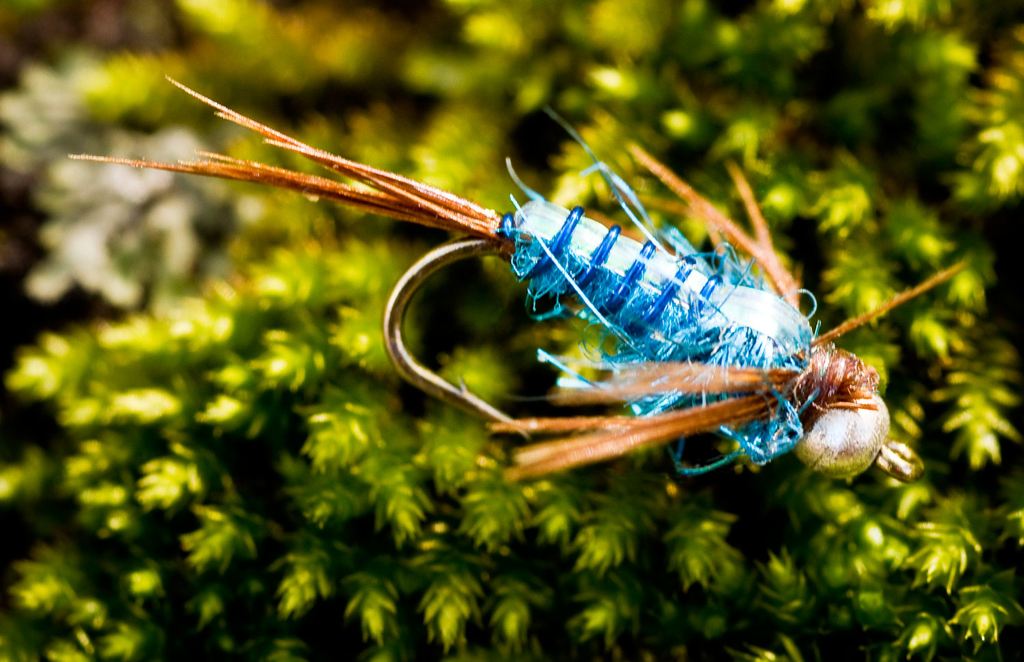I’m a firm believer in utilizing a bright attractor nymph in my tandem nymph rigs during the winter months. A couple years back, I thought to myself, why not take a proven traditional fly patterns and modify them with bright attractor fly tying materials. This way you can bank on both the proven profile characteristics and the flashy appeal. One of the first fly patterns I came up with for this idea was this pheasant tail attractor nymph above. It’s been very successful for me on the water. I generally use it as a dropper in my tandem nymph rig in size 16-20. Try a traditional bead head pheasant tail nymph in a 14-16 with my attractor pheasant tail nymph in a 18-20. It’s a deadly combination for me during the winter months.
Try experimenting with modifying other proven traditional nymph patterns into attractor nymphs. I’m a strong believer however in always using one natural (non-attractor) style nymph and one attractor nymph in my tandem rigs. This seems to work the best for me on the water. A few of our Gink & Gasoline followers have emailed us photos of some really nice catches fishing it so give it a try.
Pheasant Tail Attractor Nymph
Nymph Hook: 14-20 Tail: Natural Pheasant Tail Ribbing: Ultra Wire Small – Blue Abdomen: Flashabou Dubbing – Light Blue Shellback: 6-8 strands of Flashabou – Pearl Thorax/Collar: Natural Pheasant Tail Thread: 6/0 Brown Uni-Thread Head: 5/64 to 3/32 Nickel Bead Keep it Reel, Come fish with us in the Bahamas! Kent Klewein Gink & Gasoline www.ginkandgasoline.com hookups@ginkandgasoline.com Sign Up For Our Weekly Newsletter!

I like it!
Looks kinda weird this nuclear color, but it still looks very yummy.
Jay,
It’s a quick tie that worth a couple slots of real estate space in your fly box. They work for me year after year.
Kent
I love it! I often tie traditional flies in material with a bit of bling…although my fishing buddies laugh they cannot explain the catch rate during the colder months which I love to fish.
Trap,
Coldwater seems to make bright fly patterns more attractive to trout. I think it has to do a lot with the trout’s instincts and genetic code. They get trout moving and looking at our offerings when they normally are lethargic and hugging the bottom of the stream or river. It’s good to hear you’ve witnessed the same thing. Thanks for chiming in.
Kent
Very nice Kent! Some of these are going to Erie with me in a couple of weeks, love that blue color..
Thanks Jason,
Let me know how they work. Only used them for trout
Kent
Love the flashy style!